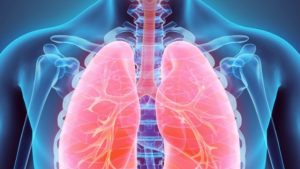
Lung Infection Symptoms
- clear
- white
- green
- yellowish-dark
A hack can wait for a little while even after different manifestations have improved. 2. Cutting chest torments Chest torment brought about by a lung disease is regularly portrayed as sharp or wounding. The chest torment will in general decline while hacking or breathing profoundly. At times the sharp agonies can be felt in your mid to upper back. 3. Fever A fever happens as your body attempts to ward off the disease. Ordinary internal heat level is commonly around 98.6°F (37°C). On the off chance that you have a bacterial lung contamination, your fever may ascend as high as a hazardous 105°F (40.5°C). Any high fever above 102°F (38.9°C) frequently brings about numerous different indications, for example,
- perspiring
- chills
- muscle hurts
- parchedness
- cerebral pain
- shortcoming
You should see a specialist if your fever goes above 102°F (38.9°C) or in the event that it keeps going over three days. 4. Body throbs Your muscles and back may throb when you have a lung disease. This is called myalgia. At times you can create aggravation in your muscles which can likewise prompt body hurts when you have a contamination. 5. Runny nose A runny nose and other influenza-like side effects, like wheezing, frequently go with a lung contamination like bronchitis. 6. Windedness Windedness implies that you want to inhale is troublesome or that you can’t take in totally. You should see a specialist immediately in case you’re experiencing difficulty relaxing. 7. Exhaustion You’ll as a rule feel drowsy and drained as your body fends off a contamination. Rest is urgent during this time. 8. Wheezing At the point when you breathe out, you may hear a sharp whistling sound known as wheezing. This is the outcome of limited aviation routes or irritation. 9. Pale blue appearance of the skin or lips Your lips or nails may begin to show up marginally blue in shading because of the absence of oxygen. 10. Snapping or shaking sounds in the lungs One of the indications of lung contamination is a popping sound in the base of the lungs, otherwise called bibasilar snaps. A specialist can hear these sounds utilizing a device called a stethoscope. Causes
- Bronchitis, pneumonia, and bronchiolitis are three kinds of lung diseases. They are regularly brought about by an infection or microorganisms.
- The most widely recognized microorganisms liable for bronchitis include:
- infections like the flu infection or respiratory syncytial infection (RSV)
- microscopic organisms, for example, Mycoplasma pneumonia, Chlamydia pneumonia, and Bordetella pertussis
- The most widely recognized microorganisms answerable for pneumonia include:
- microorganisms like Streptococcus pneumonia (generally normal), Haemophilus influenza, and Mycoplasma pneumonia
- infections like the flu infection or RSV
- Seldom, lung contaminations can be brought about by parasites, for example, Pneumocystis jirovecii, Aspergillus, or Histoplasma capsulatum.
- Parasitic lung contamination is more normal in individuals who are immunosuppressed, either from specific kinds of malignancy or HIV or from taking immunosuppressive drugs.
Diagnosis A specialist will initially take a clinical history and get some information about your manifestations. You might be posed inquiries about your occupation, ongoing travel, or openness to creatures. The specialist will quantify your temperature and tune in to your chest with a stethoscope to check for popping sounds. Other normal approaches to analyze lung contamination include:
- imaging, for example, a chest X-beam or CT check
- spirometry, an instrument that actions how a lot and how rapidly you take in air with every breath
- beat oximetry to quantify the degree of oxygen in your blood
- taking an example of bodily fluid or nasal release for additional testing
- throat swab
- complete blood check (CBC)
- blood culture
Medicines Bacterial contamination as a rule requires anti-microbials to clear it up. A contagious lung disease will require treatment with an antifungal drug, for example, ketoconazole or voriconazole. Anti-microbials will not work on viral contaminations. More often than not, you’ll need to stand by until your body wards off the disease all alone. Meanwhile, you can help your body fend off the contamination and make yourself more OK with the accompanying home consideration cures:
- take acetaminophen or ibuprofen to decrease your fever
- drink bunches of water
- attempt hot tea with nectar or ginger
- rinse saltwater
- rest however much as could reasonably be expected
- utilize a humidifier to make dampness noticeable all around
- take any recommended anti-microbial until it’s gone
For more extreme lung diseases, you may have to remain at a medical clinic during your recuperation. During your visit, you may get anti-toxins, intravenous liquids, and respiratory treatment in case you’re experiencing issues relaxing.

